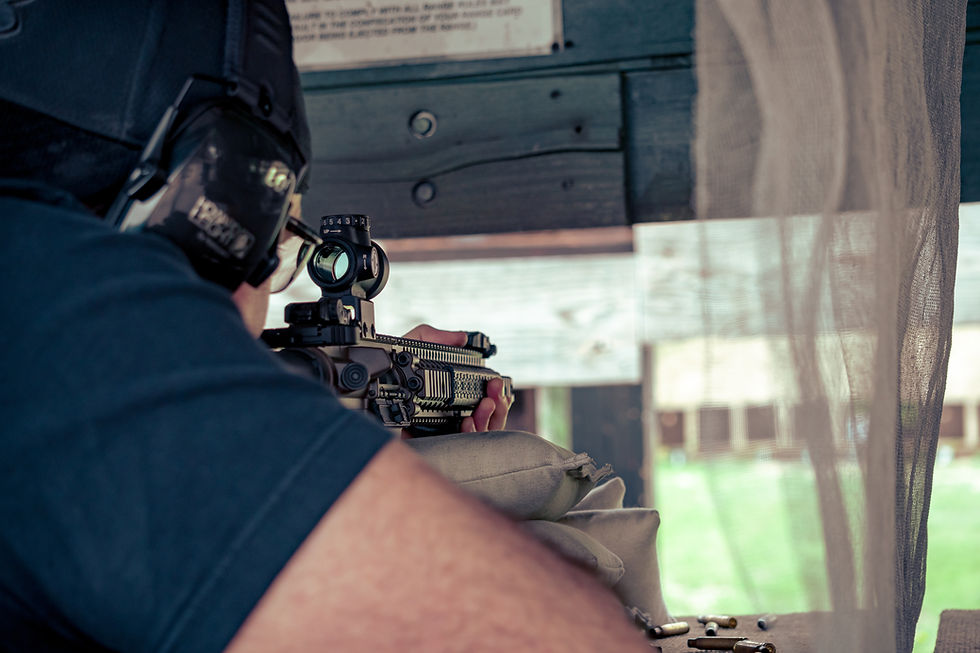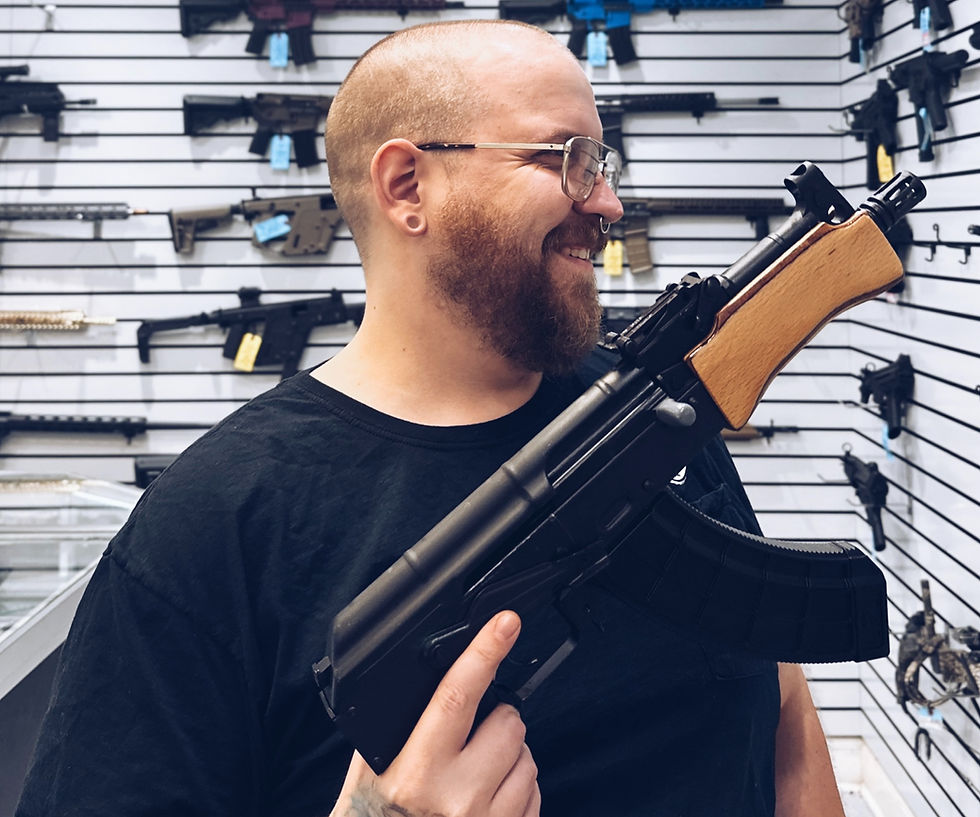Ear Gear - More Important Than You Think
- X-Ring Staff

- Jun 15, 2023
- 4 min read
Updated: Jun 20, 2023
One of the aspects of firearm safety that is easily overlooked is ear protection. Wearing proper ear gear at the range is crucial for preserving your hearing. You risk long-term damage to your ears and even hearing loss otherwise.
Preventing Hearing Loss
Firearms produce loud noises, loud noises cause permanent hearing damage. The sound produced by a single gunshot can exceed 140 decibels (dB), well above the safe limit for human ears. Repeated exposure to these loud sounds can cause noise-induced hearing loss (NIHL), which is irreversible. By wearing ear protection such as earmuffs you create a barrier that reduces intensity of the sound that reaches your eardrums, effectively lowering the risk of hearing damage.
Maintaining Concentration and Focus

Shooting at a range requires concentration, focus and situational awareness. Exposure to loud gunshots can be disorienting and distracting, affecting your ability to concentrate which will impede your shooting performance. Loud noises, such as gunshots, can also create temporary hearing impairment known as Temporary threshold shift (TTS), causing difficulty in hearing and understanding sounds immediately after shooting. By wearing ear protection, you can minimize the impact of loud noises, maintain your focus and ensure your shooting skills are not compromised.
Types Of Ear Protection
The two most popular types of ear protection on the range are earplugs and earmuffs.
Earplugs are small pieces of foam that are inserted into your ear canal to block or reduce sound. They come in a variety of shapes, sizes and materials, including foam, silicone, or rubber to accommodate individual preference. Earplugs are highly effective at reducing noise levels and are convenient and compact and usually inexpensive and/or disposable. They can provide a snug fit, preventing sound from entering the ear canal. Ear plugs are lightweight, easily carried in a pocket or bag, and are ideal for shooters seeking low profile protection.
Earmuffs consist of two ear cups connected by an adjustable headband, which creates a seal around the ears, reducing the transmission of sound. Earmuffs are designed to provide a high level noise reduction, often with its noise reduction rating (NRR) indicated on the product. They are typically made of cushioned ear cups for comfort and can be easily adjusted to fit different head sizes. Earmuffs offer excellent overall protection by covering the entire ear and providing a physical barrier against loud noises. They are particularly beneficial for shooters who desire optimal noise reduction, extended wear comfort and the ability to quickly remove or put on the ear protection as needed. Some earmuffs feature built-in microphones and speakers that amplify ambient sounds while reducing harmful noise levels. This enables shooters to hear range commands, communicate with others, and stay alert to their surroundings without sacrificing their protection.
DOUBLE UP - Why and When you should use BOTH plugs and muffs
When shooting at an indoor range, especially when shooting unsuppressed rifles, our recommendation is to wear both earplugs and earmuffs. First and foremost, it provides an extra layer of hearing protection. Earplugs or earmuffs alone may not offer sufficient noise reduction, especially when it comes to powerful firearms or when exposed to prolonged shooting sessions. By combining earplugs and earmuffs, shooters create a double barrier against loud noise, significantly reducing the risk of auditory damage and ensuring their long-term hearing health.
Furthermore, using both increases the effectiveness of hearing protection by minimizing the chance of gaps or leaks. Earplugs seal the ear canal, preventing sound from entering, while earmuffs cover the entire ear and create a sound-blocking cushion. This dual approach also helps create a tighter and more secure seal, minimizing the potential for noise leakage. The combination of both earplugs and earmuffs ensures a higher level of noise reduction and enhances overall hearing protection, allowing shooters to enjoy their shooting experience while safeguarding their hearing from potentially harmful effects that could come from loud gunshots.
Noise canceling earmuffs block gunshots and amplify environmental noise, as well as voices. This means you can effectively hear people talking around you just as well, if not better than normal. Put in your earplugs, then put on your noise canceling earmuffs, then crank up the volume so you can hear people talking overtop of your earplugs.
If you are shooting outdoors, or only pistols indoors, one type of “ear gear” is usually sufficient. We also recommend noise canceling earmuffs for the reasons above - being able to hear and communicate with other shooters talking around you is really important for safety.
Promoting Overall Safety
Proper ear protection not only preserves your hearing but also helps promote overall safety. Loud gunshots can startle or disorient other enthusiasts, increasing the risk of accidents. By wearing ear protection, you contribute to a safer shooting environment. Wearing ear protection sets an example for others and encourages responsible shooting habits. By prioritizing your hearing safety, you inspire fellow shooters to do the same and contribute to a culture of safety and awareness. Educating others about the potential risks of exposure to loud noises and encouraging them to wear ear protection is always a good thing and creates a community that values the safety and well-being of all enthusiasts.
Protecting your hearing should be a top priority. The loud noises produced by firearms can have severe and irreversible consequences on your hearing health. By wearing proper ear protection you safeguard your hearing, maintain focus and promote overall safety. Your hearing is a precious asset, one you can’t take granted of.
We value your safety so if you’re interested in learning more about how to keep safe while at the range or when operating a firearm in general, look at our post where we discuss The 4 Fundamental Rules of Firearm Safety and Why Eye Protection Is Just As Important as Ear Protection.










Comments